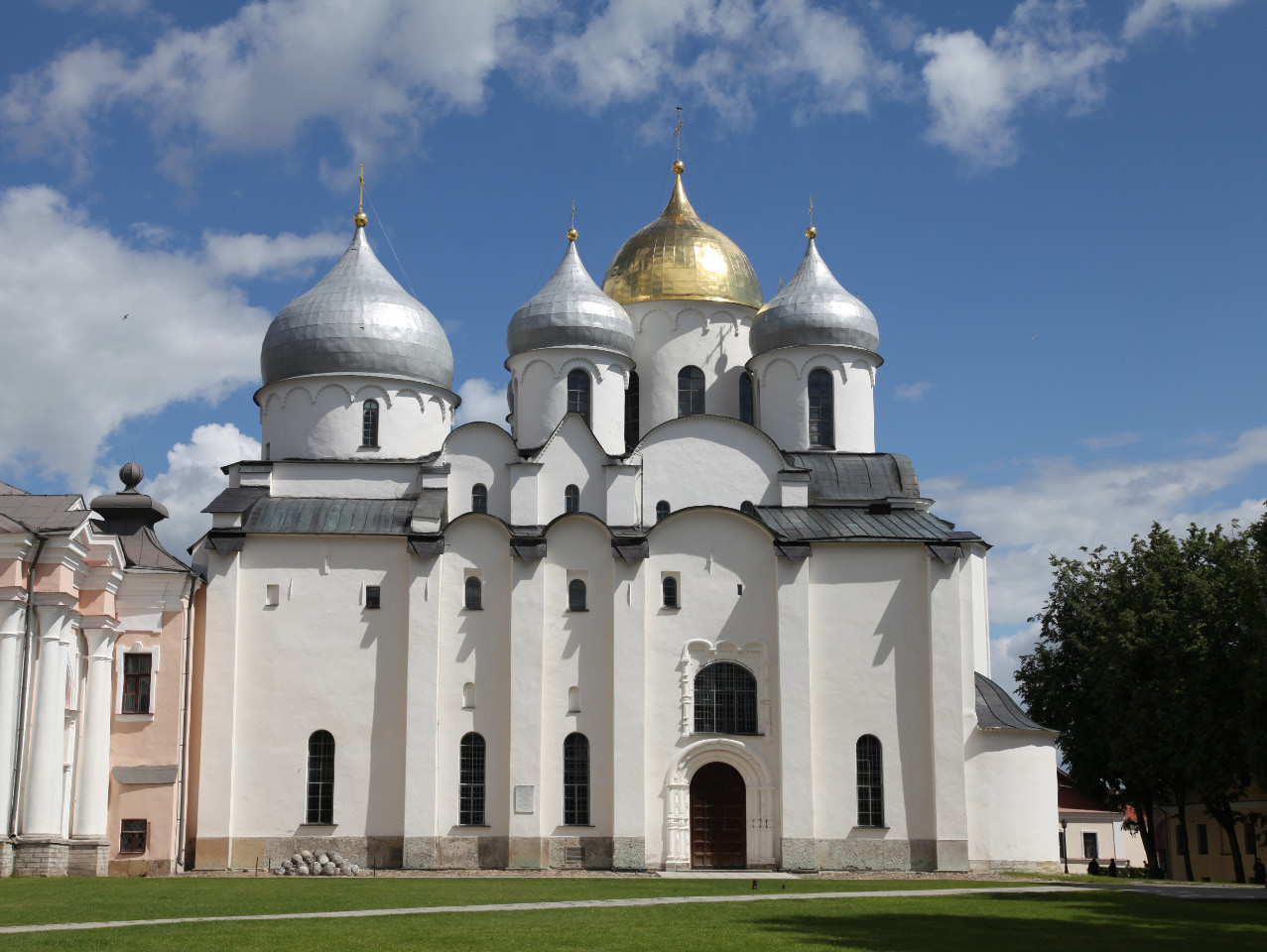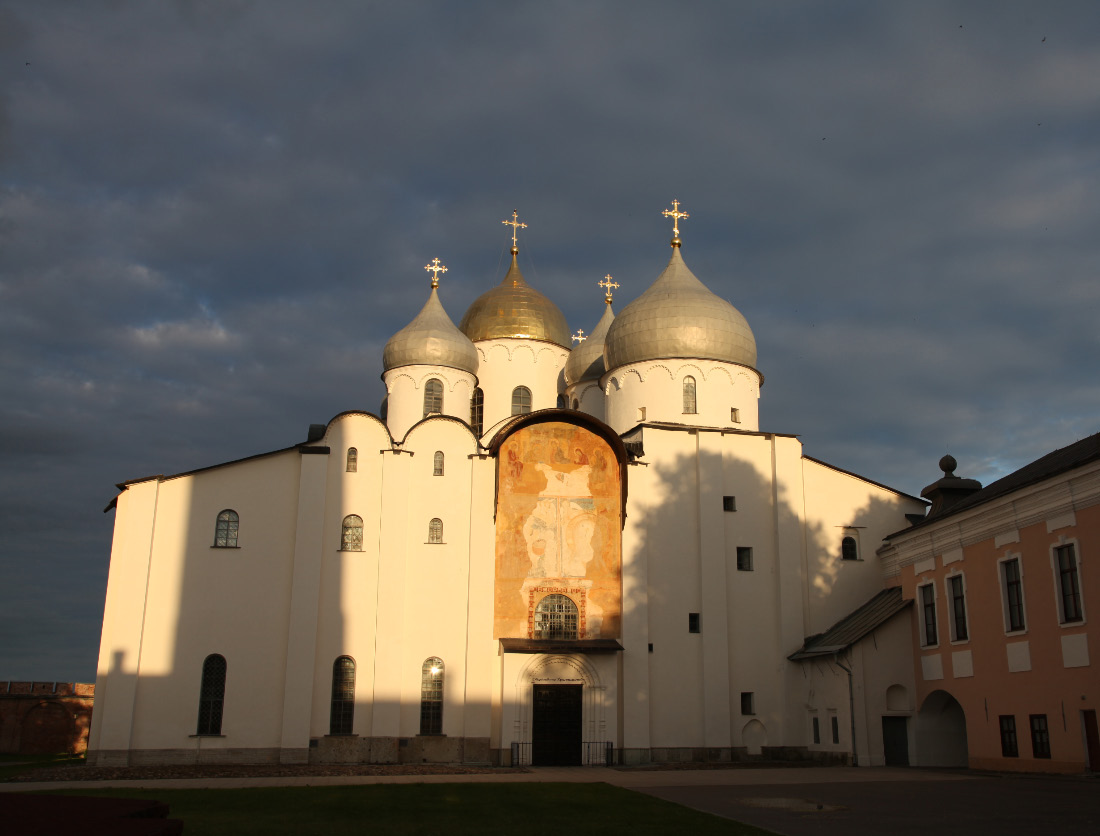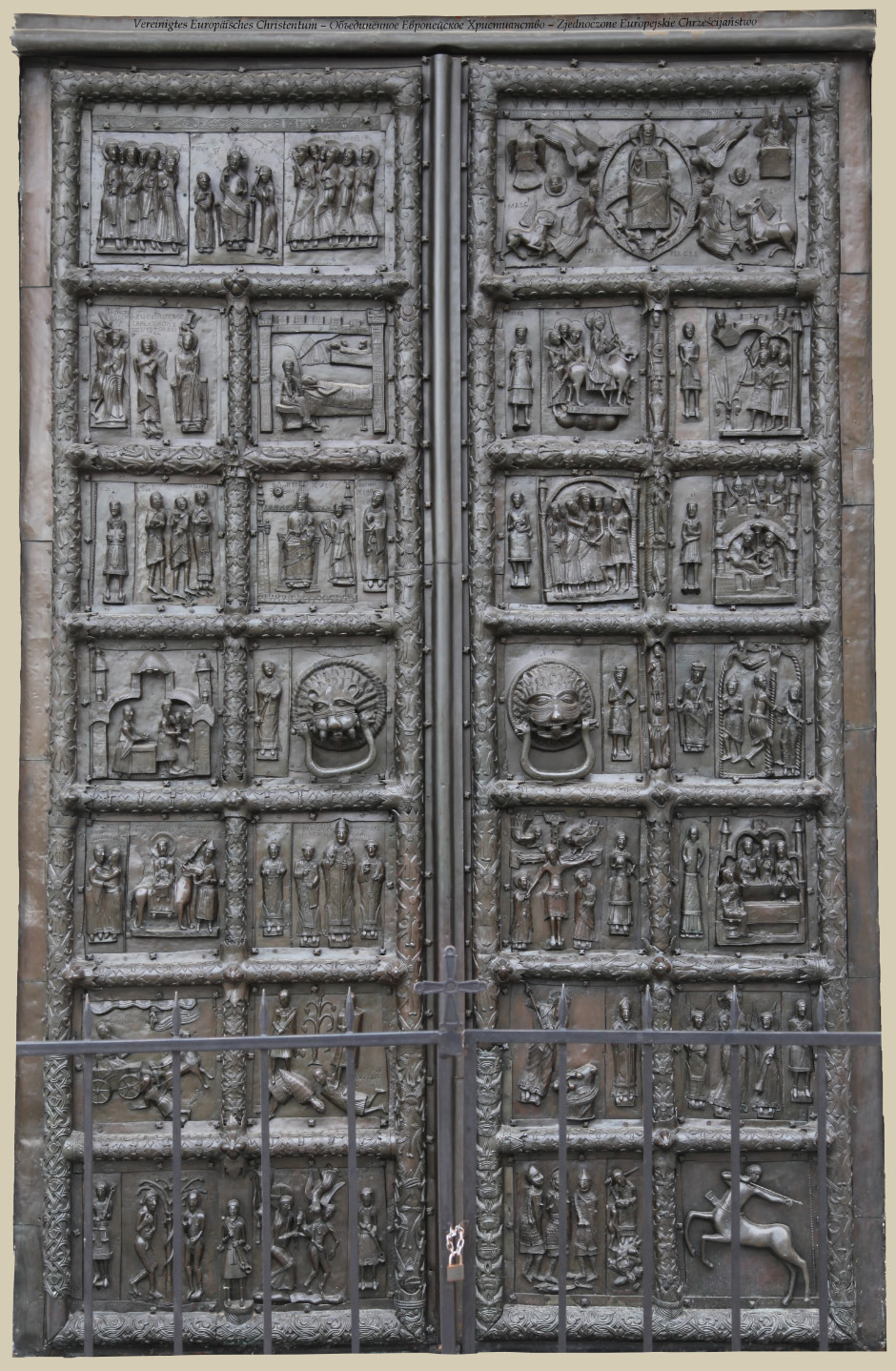|
Великий Новгород – Veliky Novgorod
| |
Собор Святой Софии – the Cathedral of Divine Holy Wisdom – Saint Sophia |
|
| |
|
|
| |
 |
|
|
|
|
| |
Within the southern reaches of the territory of the Russian Federation, and so very much nearer geographically to Byzantium than is Novgorod, amidst the Большой Кавказ – Greater Caucasus Mountains and not far north of the border with საქართველო – Грузия – Georgia, in the Карачаево-Черкесская Республика – Karachay-Cherkess Republic, lies a village called Архыз – Arkhyz ("mudflows"). In this village are situated Churches of early X century construction, three in number, the Зеленчукские храмы – Zelenchuk Churches, called northern, middle and southern. Yet these Churches were not Russian or other Slavic. They belonged to the Iranian, Proto-Ossetian culture of Christian Алания – Alania, that is, before the murderous Mongol hordes destroyed it, more specifically the hordes of Möngke Khan in the XIII century. Also in Karachay-Cherkess, about 57 kilometers northeast of Arkhyz as the crow flies, is a small town called Карачаевск – Karachayevsk. A few kilometers upstream from this town on the Kuban River – Кубань река and on the cliffs of the mountains is another (that is, a fourth) early X century Church, called Шоанинский храм – Shoana Church (also known as the Хумаринский храм – Khumara Church), consecrated to the honor of Saint George – Sanctus Georgius – Святой Георгий Победоносец – Άγιος Γεώργιος (martyred under Emperor Diocletian in Nicomedia on 23 April 303).
Apart from these four small but important Churches, located most of 2000 kilometers to the south-southeast of Veliky Novgorod, the Собор Святой Софии – the Cathedral of Saint Sophia (southern façade pictured here on 14 June 2016) is Russia's oldest Church, as also the oldest extant functioning building of any kind in Russia.
|
|
| |
 |
|
| |
The western façade really faces more in the direction northwest, or at least west northwest, and here at dusk on 13 June 2016 the Часозвоня – Clock Tower from 1673 casts a long shadow on our Cathedral of 1050 consecration, which replaced a still older wooden Church from around 989 От Рождества Христова – Anno Domini. |
|
|
|
|
| |
Магдебургские Врата
Bronze Türen von Magdeburg (Bronzetür aus Płock)
Drzwi Płockie
Magdeburg Gates or Płock Gates or Sigtuna Gates |
|
| |
|
|
| |
The German and the Polish and the Russian brought together by Christian faith and Christian art. |
|
| |
|
|
| |
 |
|
| |
|
|
| |
Though the version that these gates had anything to do with Swedish Sigtuna is not accurate. These exquisite medieval bronze doors were made by German artists, Meister Riquinus and Helfer Waismuth, in Magdeburg in the years 1152 to 1154 on order from the bishop of Płock in Poland, Aleksander of Malonne, to guard and adorn the entrance to the Romanesque Płock Cathedral, also known as the Cathedral of the Blessed Virgin Mary of Masovia (consecrated in 1144) – Bazylika katedralna Wniebowzięcia Najświętszej Maryi Panny w Płocku. There they continued for perhaps 250 years. How and when they came to adorn the western entrance to Russia's oldest Cathedral — Собор Святой Софии – the Cathedral of Divine Holy Wisdom – Saint Sophia — in Novgorod the Great – Großes Nowgorod – Великий Новгород is disputed. The transfer may have occurred subsequent to their having been stolen by Lithuanians during a plundering operation in Mazovia in the XIII century. An alternative version has them transferred to Novgorod by gift of Lithuanian Grand Duke and Polish King Władysław II Jagiełło to his brother Lengvenis – Simeon Lingwen – Lingwen Semen Olgierdowicz – Лугвен – Лугвен-Сымон (c. 1355 – c. 1431), another son of Algirdas. Lingwen converted to Orthodoxy and became Grand Duke of Novgorod. |
|
| |
|
|
| |
|
|
| |
Музей деревянного зодчества Витославлицы – Museum of Wooden Architecture Vitoslavlitsy |
|
| "Rise, and have no fear." |
|
"This is my beloved Son, with whom I am well pleased; listen to him." |
the Holy Spirit |
Man proposes, God disposes |
|